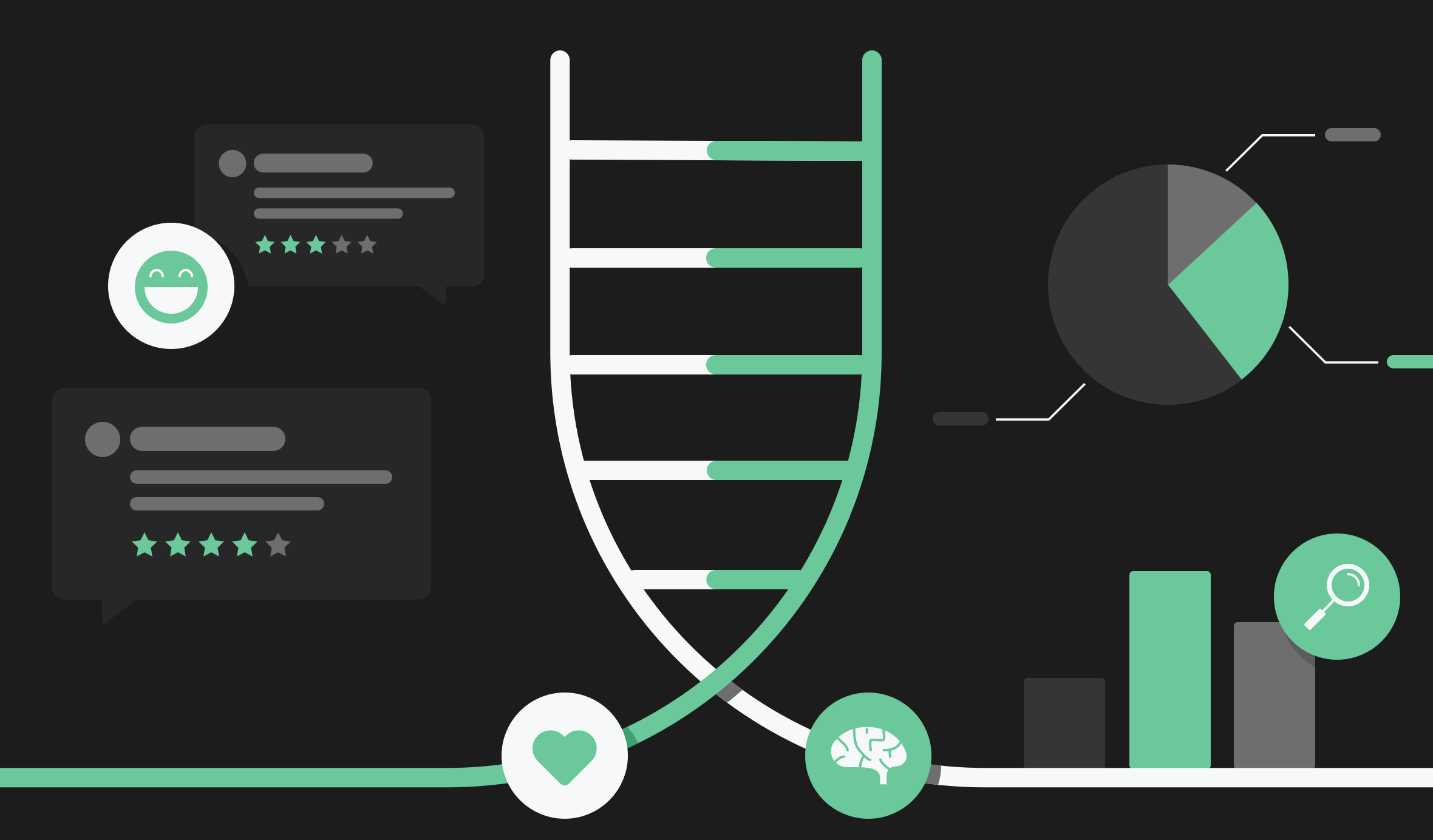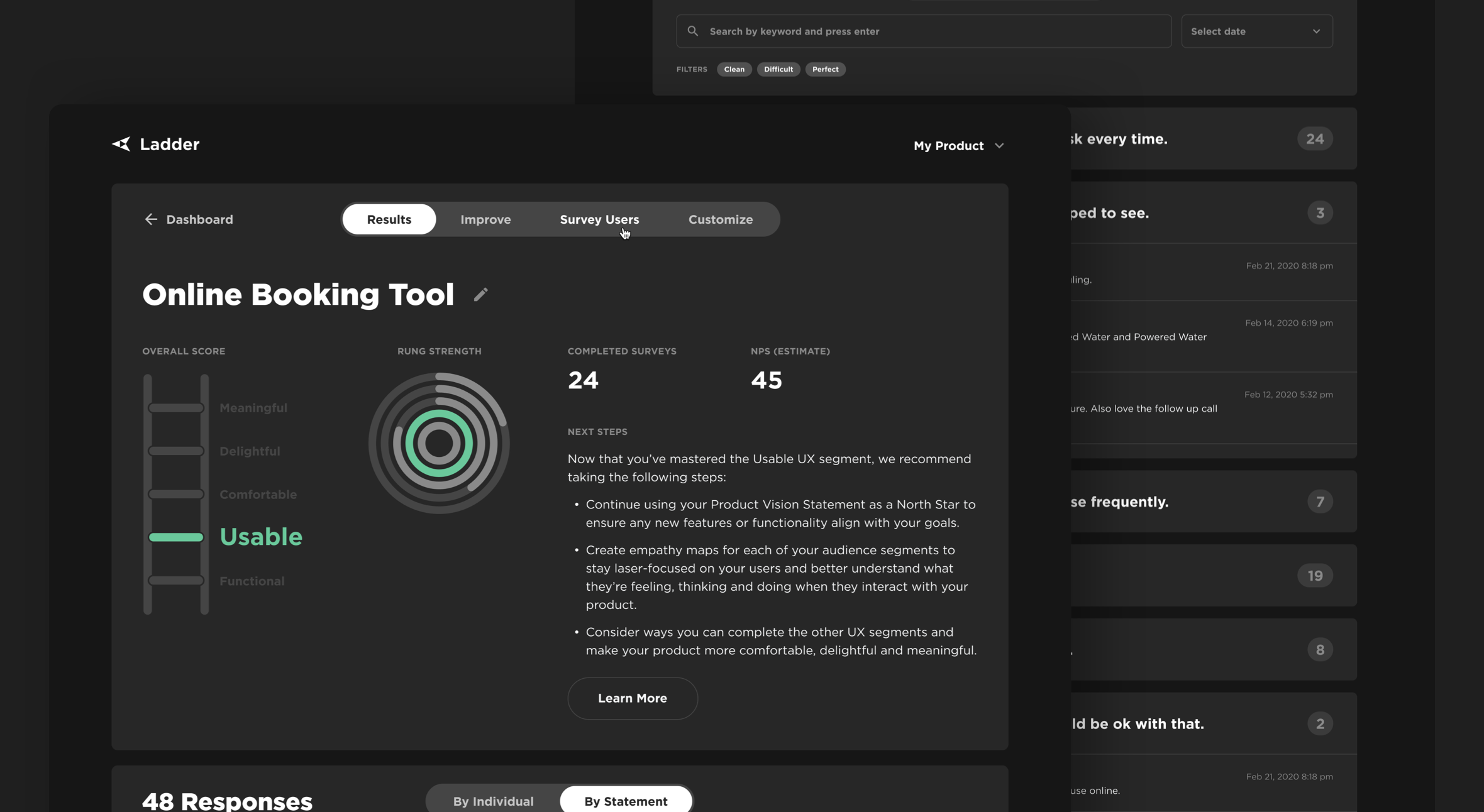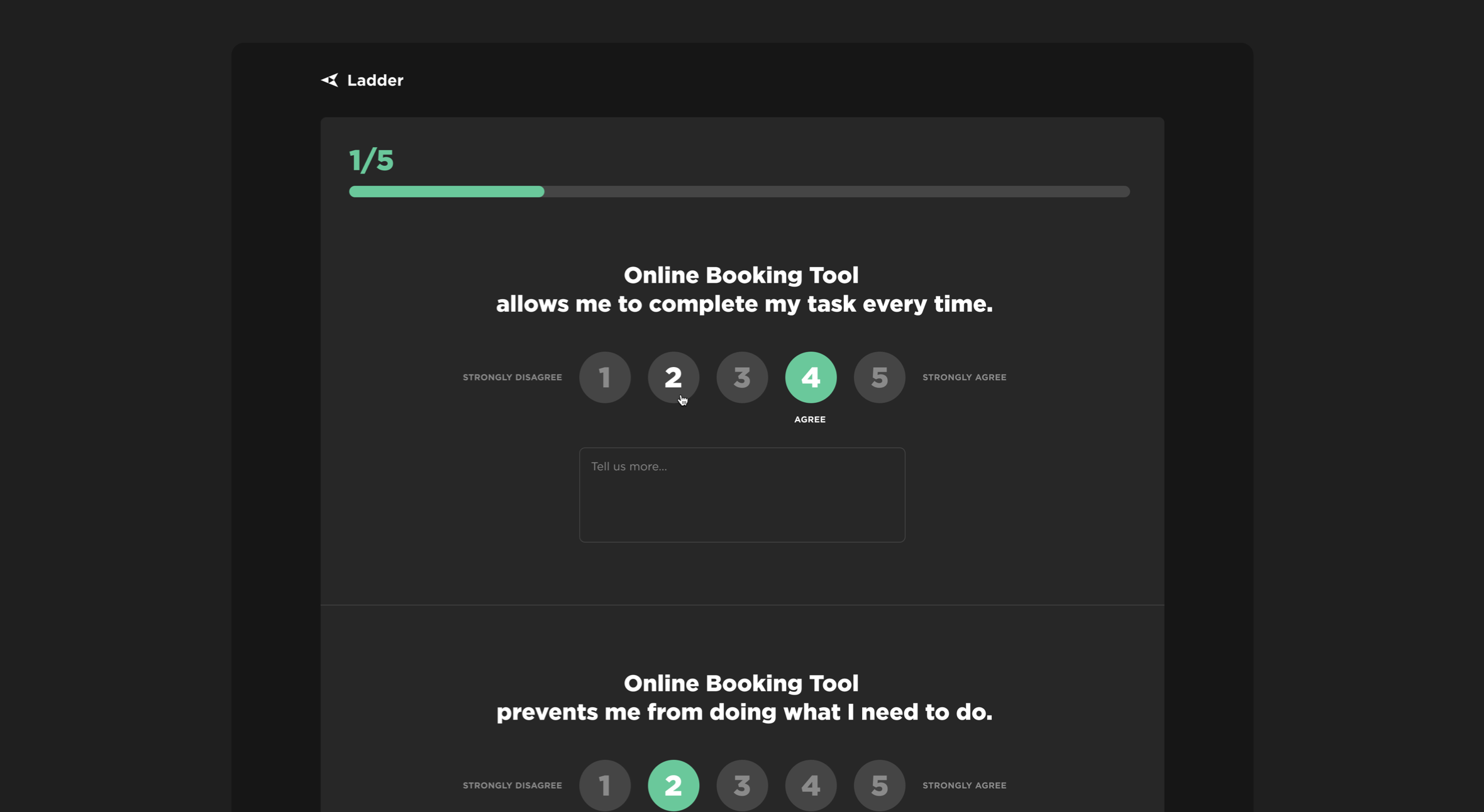Measure UX Success and Build Better Products with the Drawbackwards Ladder

One of the core struggles in building digital products is how to reliably measure user experience.
If you’re a data junky you might dig into the metrics to see what users are doing. What pages are they visiting? What buttons and links do they click? How much time do they spend on tasks? How often do they come back to the product?
But that only tells half the story.
The best products and services are built on both data and feelings. How do users feel while using the product? What do they think about it? Do they perceive the product as easy to use? Why do they feel that way?
In the past, products were built from purely creative intuition. Empathy and gut feelings drove design. Now, businesses require a data-driven approach. Leaders want everything connected back to numbers they can hang their hat on.
How do you merge intuition with data?
There are plenty of techniques for capturing qualitative feedback and there are plenty of tools for gathering quantitative data. But we looked around and realized there wasn’t really any tool or technique that could do both at the same time.
That’s why we created the Drawbackwards Ladder.

UX Success Relies on Data AND Feelings
The Ladder doesn’t focus just on what you can measure about user actions or what you can learn about how they feel. It’s designed to gauge the overall quality of a product or service by blending quantitative measurements with qualitative feedback.
It does this by assessing the strengths and weaknesses of a product or service across five key aspects of user experience.
Functional: How much trial, error, and frustration does it take for a person to identify and accomplish specific tasks?
Usable: How well does the structure of the product or service help people complete their tasks and remember how to do them again?
Comfortable: Are tasks easy and intuitive to complete and do things feel like they’re in the right place so people don’t need to think about what to do?
Delightful: Is the right assistance given when needed and are there unexpected moments that lift moods and help people enjoy their tasks?
Meaningful: Does the product or service lead to new ways of thinking, working, and living, saving time and changing routines for the better?
The Ladder helps set a benchmark for where you are and a linear roadmap for where you could end up. It evaluates how far your product or service needs to “climb” to reach the next level of achievement.
Each rung on the ladder leads to a better user experience, stronger user loyalty, and more UX success.
By evaluating experience across multiple dimensions it quantifies qualitative experiences. It asks users to rate their experience across all five dimensions on a Likert scale and then offers them an opportunity to explain those ratings.
It’s uniquely designed to measure both data and feelings so you can track your progress toward ultimate success.
Measure. Improve. Repeat.
The Ladder is not only a measurement tool. It’s a way to change your internal product development culture. It gives you the vocabulary and the structure to have more mature UX conversations.
Product success is closely tied to UX maturity. The more robust your understanding of good user experience and the more you invest in your team’s UX competencies, the more likely you are to build features and products that help people in the real world.
The Ladder is a conversation starter. By establishing a benchmark of your current experience you can plan for your future path forward and estimate the effort it will take to get there.
The Ladder is a framework for design work. It helps teams identify the areas that are most in need of improvement and set a plan to address fundamental pain points before jumping ahead to exciting future-state enhancements.
The Ladder is a catalyst for growth. By framing progress in a linear model, it provides motivation for teams to want to reach the next level. If you’ve identified your weak spots, set a plan to prioritize and address them, you can then use the Ladder to motivate your team to move faster and smarter up the Ladder.
The Ladder is a tool for building a mature UX organization. It’s not designed to be used once and forgotten. It’s a tool to return to time and again to measure your progress, make improvements, and repeat until you have a product that exceeds all expectations and beats the competition.
How Our Clients Use the Ladder to Build Better Products
Our first step with clients is to introduce them to the Ladder and establish where they are today. Why? Because time and again we’ve seen products with slick designs land squarely on the bottom rung.
The Ladder is a truth-o-meter. It cuts through the fancy visuals and helps you see your product the way your users do - as a tool they need to help them complete a job.
We’ve used the Ladder to evaluate everything from carpet cleaning websites to SaaS products to healthcare mobile apps used to capture medical assessments.
Every time, the Ladder has shown us and our clients things we couldn’t see otherwise. It’s also reinforced problems that we knew existed but it often casts a new light on how to see those pain points. By combining quantitative and qualitative data side by side, the Ladder gives you as close to a 360-degree view of specific aspects of your product as you can get.

The other secret to the Ladder’s success? It’s built to be quickly scalable. We use the Ladder at the end of a usability test to see how people feel about a prototype or existing product. But the Ladder can also be sent to a large email list for people to self-evaluate and complete on their own.

No longer are you tied to the time-consuming task of conducting a handful of user interviews. The Ladder can help get similar feedback and evaluation in a fraction of the time by surveying a larger group of people quickly. It’s no substitute for true evaluative user research, but it’s a great first step and a helpful additional tool in the toolbox for busy product teams trying to iterate quickly.
Ready to Start Climbing the Ladder?
Book 30 minutes with us to learn more about how we’ve used the Ladder to help clients and partners improve their products and services. We’ll partner with you to identify where you are today and how to get where you want to be tomorrow.